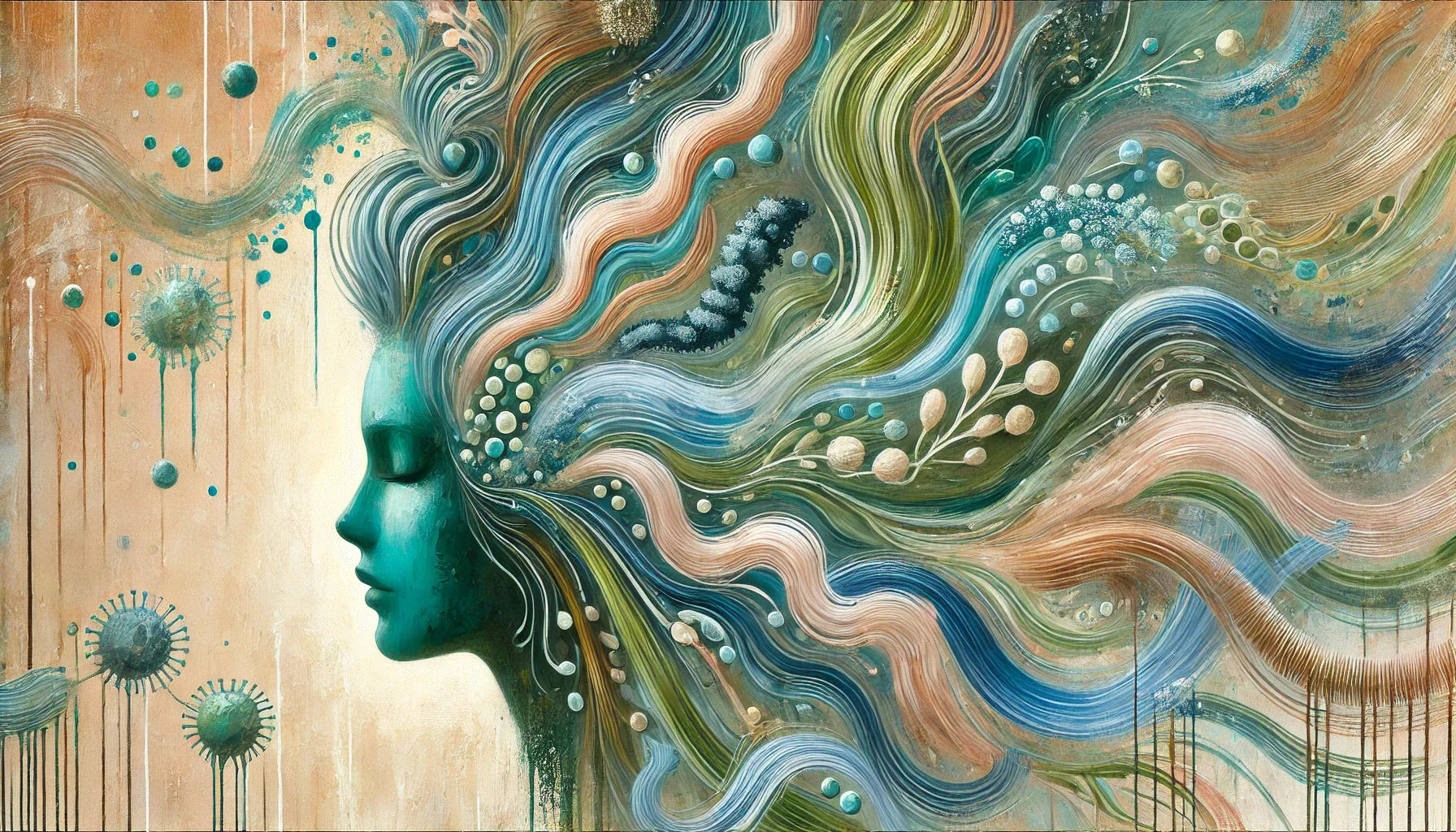When we think about hair care, most of us reach for a shampoo that promises shine, bounce, or volume. But here’s the truth: many shampoos aren’t causing scalp problems outright, but they also aren’t helping. They’re designed to foam, fragrance, and polish hair—a non-living fibre—while neglecting the living skin and microbiome of the scalp beneath.
No wonder scalp problems are so widespread. Dandruff alone affects up to half the global population, and 20–30% of people experience ongoing scalp sensitivity—tightness, itching, or irritation. Add in psoriasis (which affects 2–3% of the population and often involves the scalp), and you see why scalp issues are among the most common yet overlooked skin concerns.
The Forgotten Skin Under Your Hair
Shampoos historically target the appearance of hair, rather than the health of scalp skin. Hair shafts may shine, but if the scalp barrier is dry, inflamed, or imbalanced, both skin and hair eventually suffer.
A healthier approach? Care for the scalp as skin—because that’s where real vitality begins.
The Scalp Microbiome: A Balancing Act
Your scalp isn’t just skin covered by hair. It’s an oily, warm ecosystem with its own microbial fingerprint:
-
The scalp produces more sebum than most skin regions, creating a lipid-rich niche.
-
This favours Malassezia yeasts, which can overgrow and trigger dandruff or seborrheic dermatitis.
-
Staphylococcus aureus (Staph A) can also be a concern: while common on skin, its overgrowth is linked to inflammation and flare-ups in eczema-like scalp conditions.
In health, the microbiome is diverse and balanced. But when certain players (like Malassezia or Staph A) dominate, the system tips into irritation, flaking, and chronic inflammation.
That’s why restoring balance isn’t just about cleansing—it’s about modulating the microbiome, calming inflammation, and re-establishing diversity.
The Inside–Out Connection
Scalp health isn’t only skin-deep. Many conditions—psoriasis, eczema, even stubborn dandruff—are tied to the gut–skin axis. Microbiome disruption in the gut, or systemic inflammation, often shows up as skin problems.
At PhycoHealth, we believe scalp care needs a dual approach:
-
Outside: topical care that supports the scalp barrier and microbiome.
-
Inside: gut-nourishing fibres like SeaFibre™ to reduce systemic inflammation.
How Scalp Revive Works
We designed Scalp Revive to be more than just a wash—it’s a treatment that restores balance on multiple fronts:
-
Phyaluronic™ seaweed extract (xylorhamnoglycuronan from Ulva sp. 84) – Hydrates, supports barrier repair, and crucially has biofilm-inhibiting properties. This helps disarm overdominant microbes like Malassezia or Staph A, clearing space for a more diverse, resilient microbiome to return.
-
Aloe Vera & Panthenol – Calm inflammation, soothe itch, and keep the scalp hydrated.
-
Niacinamide (Vitamin B3) – Strengthens the scalp barrier and regulates sebum for a more balanced microbial environment.
-
Pea Sprout Extract, Coffee & Rosemary – Stimulate circulation and follicle vitality, improving the environment for healthy hair growth.
-
Argan Oil & Coconut Oil – Rich in nourishing lipids. They replenish scalp barrier lipids and smooth, protect, and condition the hair shafts—because while scalp comes first, we don’t forget the hair it grows.
-
Gentle cleansers – Sweep away buildup without stripping oils essential for microbial balance.
-
Sweet Orange Oil – Naturally uplifting and mildly antimicrobial, helping balance without sterilising.
✨ Healthy hair begins with a healthy scalp—and a healthy scalp means a hydrated barrier, a balanced microbiome, and support from both the surface and within. That’s the full-circle science behind Scalp Revive.
Here are some fun facts:
| Research | Key Findings / Relevance |
|---|---|
| Scalp microbiome: a guide to better understanding scalp diseases and treatments | Review summarising scalp microbial dysregulation (dysbiosis) in conditions like dandruff/seborrheic dermatitis, scalp psoriasis, alopecia; notes increased abundance of Staphylococcus and Malassezia in diseased vs healthy scalps. (SpringerLink) |
| The diversity and abundance of fungi and bacteria on the healthy and dandruff affected human scalp | Using sequencing and qPCR, this study found that Staphylococcus spp. and Malassezia are more frequent in dandruff scalps vs healthy, and Cutibacterium is lower. (PLOS) |
| Metagenomic analyses of the scalp microbiome and insights from UK volunteers (high vs low dandruff) | Demonstrated key taxa like Malassezia, Staphylococcus, Cutibacterium are associated with dandruff vs non-dandruff, with shifts in abundance and functional pathways. (LivRepository) |
| Investigation of the Microbiome in Scalp Biopsies of Different Alopecia Types | In scalp biopsies from different alopecia types, Staphylococcus aureus is one of the microbial taxa observed along with Malassezia, suggesting that in altered scalp conditions, S. aureus may be part of the local microbial landscape. (JAAD) |
| An in vivo approach for revealing physiological properties of human scalp biofilms | This study developed a method to stain biofilm on the human scalp, indicating that biofilm formation is detectable in vivo, which is relevant since S. aureus is known to engage in biofilms. (Wiley Online Library) |
| Spatial Distribution and Functional Impact of Human Scalp Hair Follicle Microbiota | While focusing more on hair follicles, this work shows how microbes located in follicles vary regionally and may influence scalp/follicle physiology. Helps tie surface vs deeper microbiome contexts. (ScienceDirect) |
| 1032 Characterization of the human scalp hair follicle microbiome | Uses laser capture microdissection and shotgun sequencing to explore how follicle-resident microbiome varies and relates to health/disease. (Jid Online) |
